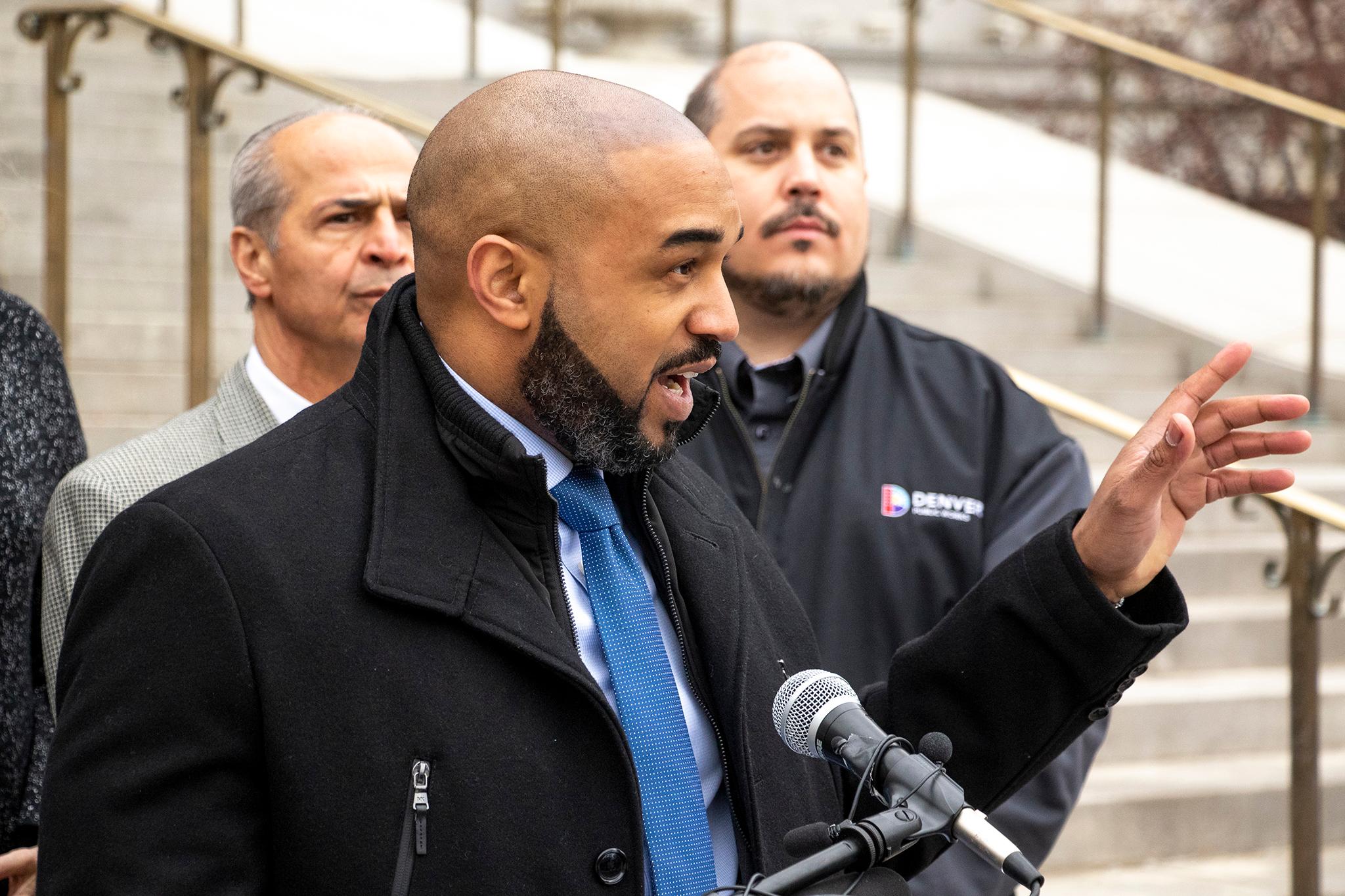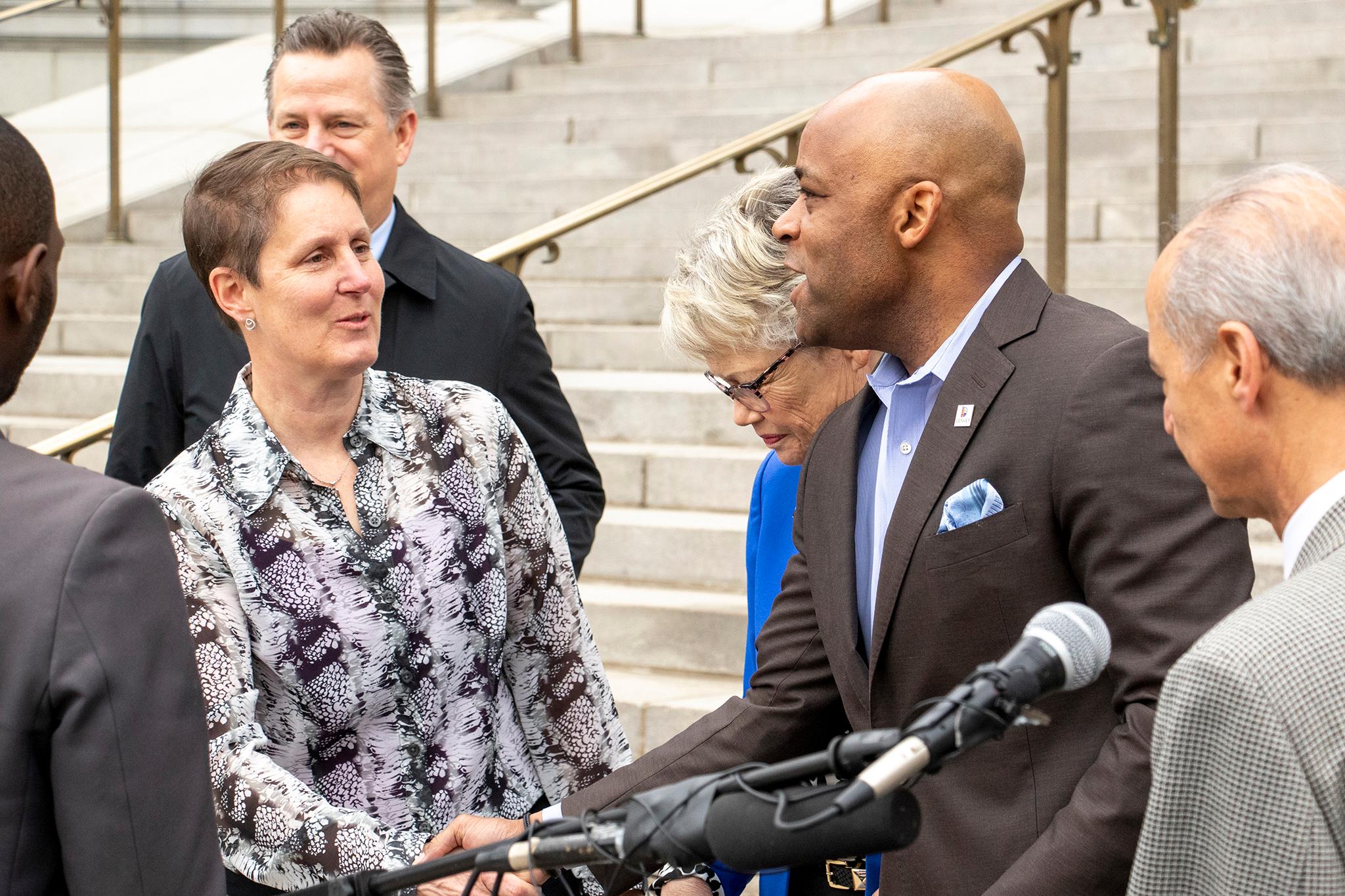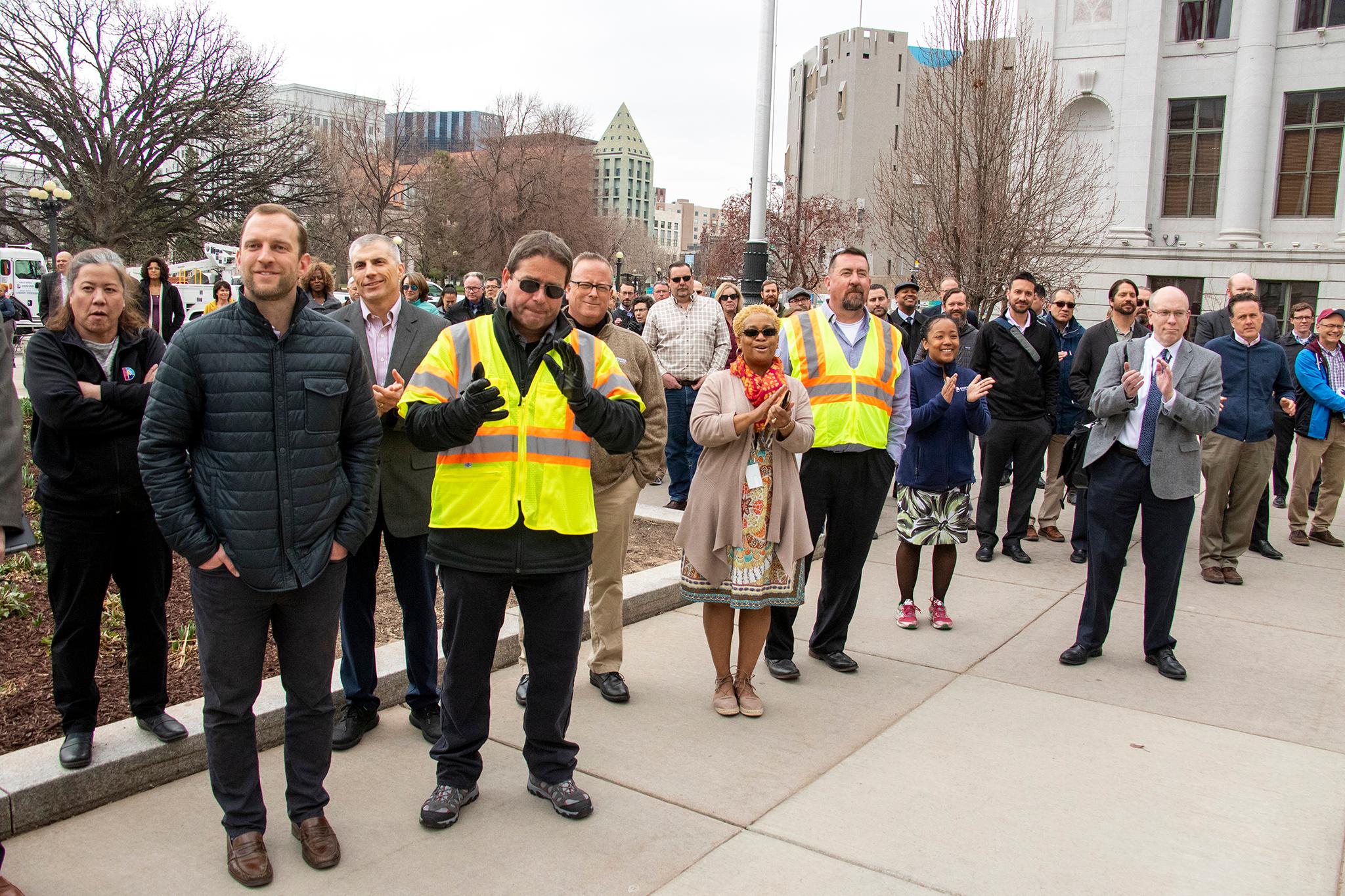One of the worst-kept secrets in Denver went public Tuesday when Mayor Michael Hancock announced the new Department of Transportation and Infrastructure, aimed at delivering street-level projects faster and setting the table for a city-run transit agency.
Right now the department that picks up your trash, Denver Public Works, also designs, plans and builds things like bike lanes, sidewalks and roads. Transportation is a division of the department, with about 120 employees -- plus outside contractors. With the new department, about 1,100 city staffers will work on transportation stuff, DPW Executive Director Eulois Cleckley said.
The new setup prioritizes moving people around the city and will demote Public Works to a division within the new department that manages solid waste, wastewater and other traditional functions. The department will be a cabinet-level position, meaning voters will have to approve a charter change in November.
"This wasn't an exercise in segregation or separation, this was an exercise in integration, and making sure we have modern transportation principles and policies integrated throughout a large organization as we move forward in building out the next 100 years of the City and County of Denver," Cleckley said.

After about three years of talk, Denver will join major cities like Chicago, New York and Washington, D.C., all of which have transportation departments. The consolidation will save $7.3 million annually, which Cleckley said will fund transport projects.
Hancock has laid out visions for walking, biking and transit under the moniker of Denveright, a citywide planning process that's lasted three years. Voters approved about half of a billion dollars for transportation projects in 2017 as well. But questions remain about how they go from vision to reality. The reorganization is part of the answer, Hancock told reporters.
The Broadway bike lane began as a "pilot project" almost five years ago.
It has languished as a half-mile stretch of modern infrastructure disconnected from the rest of the city's bike network instead of connecting to the Cherry Creek Trail, which is the end goal. Cleckley blamed the slow pace on the department's structure, but politics can play a role in these projects too. In 2016, for instance, a Curtis Park neighborhood group stopped a protected bike lane from being installed because some neighbors were worried about parking.
Cleckley calls these situations "trade-offs," which will be necessary to lower Denver's driving rates by providing other options. About 70 percent of locals commute solo by car. The reorganization will supposedly streamline projects like these by ushering them through the public process more efficiently.

"We don't want to be in another situation where we have a five-year span between a project idea and delivery ... we'll be able to position ourselves to lessen that amount of time and deliver projects more efficiently," Cleckley said.
The Denver Streets Partnership, which advocates for better walking, biking and transit in the city, condoned the switch for several reasons and believes it will improve Denver's unacceptable rate of traffic deaths.
"We need to have transportation systems for our most vulnerable populations, including those who don't drive, like youth and seniors, people in wheelchairs, people who choose or need to get around without a car," said Piep van Heuven, the chair.
The city wants to play a bigger role in public mass transit -- that's a major reason for this change.
The city, which has the greatest population density and largest job center in the region, has to share the Regional Transportation District's service with suburbs and exurbs.
Denver could once again operate its own transit system if voters pass the charter change. The city could also simply operate transit in conjunction with RTD. Either way, the charter change would set the table.

"Denver of course used to have the Denver Transit Authority, for those of you have been here a really long time, and so it's something to rethink again" said City Councilwoman Mary Beth Susman, who was instrumental in the overhaul. "RTD is doing a great job in its regional responsibility but Denver has some particular needs ... of getting people around in a less single-occupancy-vehicle (type of) way."
These changes are being made at 35,000 feet by politicians and political appointees. On the ground-level, signal engineer Tom Jividen told Denverite his job won't change all that much. But the reorganization will give him a better understanding of his role in a huge machine.
"It makes sense, being able to make travel times easier to get people from point A to point B with cars, autonomous cars, transit," Jividen said.
Next step: The Denver City Council will vote on a charter change to send to voters.













